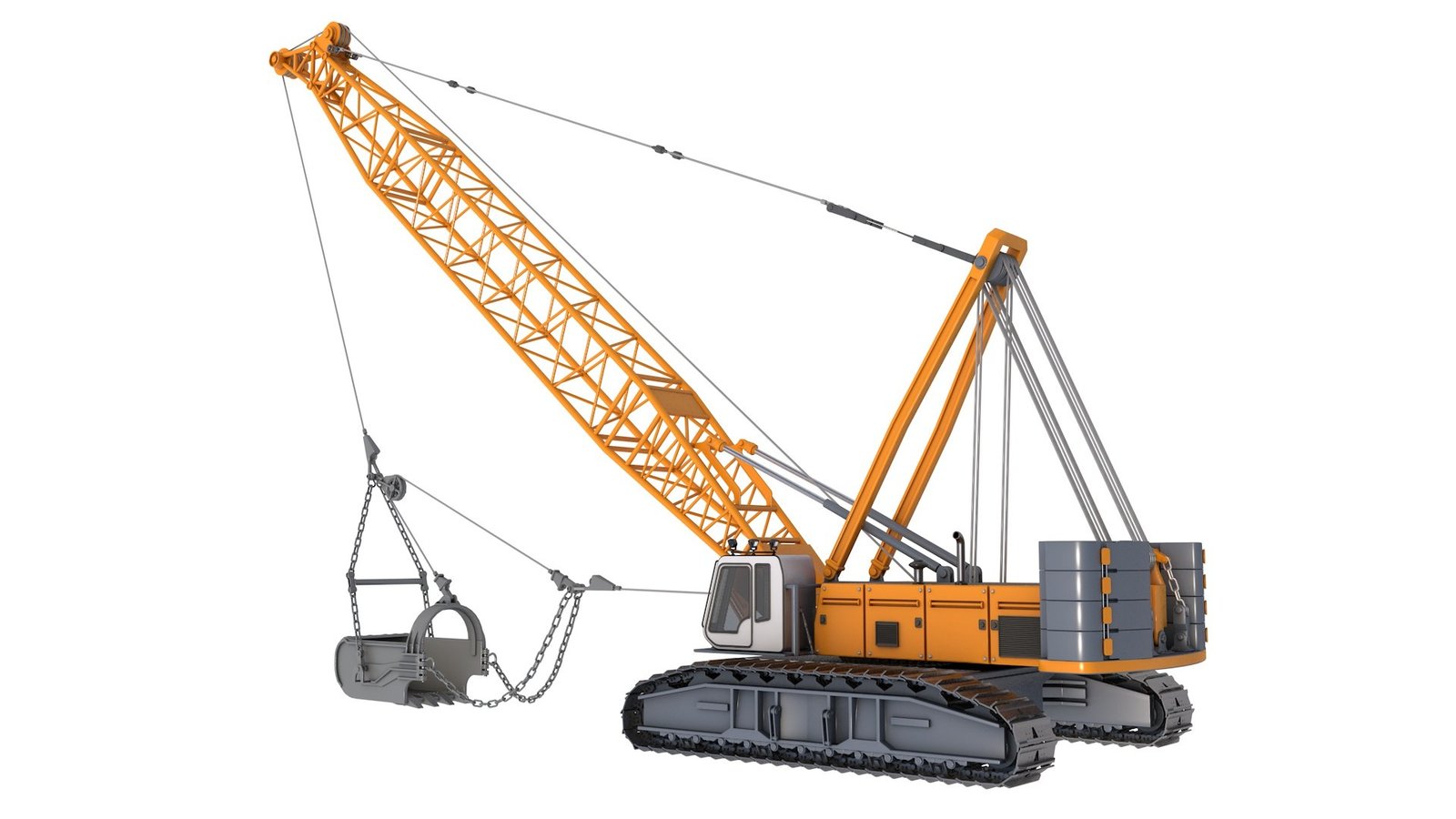
Introduction:
In the world of heavy machinery, few machines command as much awe and respect as the dragline excavator. Towering over the landscape, these colossal machines have played a pivotal role in mining, construction, and infrastructure projects for over a century. From their humble beginnings to their modern incarnations, draglines have shaped the way we extract resources and build the world around us. In this comprehensive guide, we’ll explore the history, design, functionality, and applications of dragline excavators, unraveling the secrets behind their enduring legacy and their vital role in shaping the future of industry.
The Evolution of Dragline Excavators:
Origins:
The roots of dragline excavators can be traced back to the late 19th century when steam-powered draglines were first used in mining operations. These early machines, operated by cables and winches, were used to remove overburden and extract minerals from the earth, revolutionizing the mining industry.
Development:
Throughout the 20th century, dragline technology continued to advance rapidly, with innovations in power systems, bucket design, and mobility. The introduction of diesel engines, electric motors, and walking draglines transformed the industry, allowing for greater efficiency, productivity, and versatility in excavation operations.
Modern Innovations:
Today, dragline excavators come in a variety of sizes, configurations, and capabilities, ranging from small crawler-mounted units for surface mining to massive behemoths capable of moving millions of cubic yards of material. Recent innovations in dragline design include advanced control systems, modular components, and integrated technology, which enhance performance, efficiency, and safety on job sites.
Anatomy of a Dragline Excavator:
1. Boom:
The boom of the dragline is the long, horizontal arm that extends from the machine’s base and supports the dragline bucket or shovel. The boom can be raised, lowered, and swung horizontally to reach and excavate material from the working area.
2. Bucket or Shovel:
The bucket or shovel of the dragline is the attachment used to excavate material from the ground and load it into trucks or transport systems. Buckets come in various sizes and configurations, ranging from small dipper buckets for fine material to large clamshell buckets for bulk material handling.
3. Counterweight:
The counterweight of the dragline provides stability and balance to the machine, counteracting the weight of the boom and bucket during operation. Counterweights are typically located at the rear of the machine and can be adjusted to optimize stability and performance.
4. Undercarriage:
The undercarriage of the dragline supports the machine’s weight and provides mobility on the job site. Crawler-mounted draglines are equipped with tracks or wheels, allowing them to traverse rough terrain and navigate obstacles with ease.
Applications of Dragline Excavators:
1. Surface Mining:
Dragline excavators are widely used in surface mining operations for tasks such as overburden removal, coal extraction, and mineral processing. Their large size and high production rates make them ideal for handling large volumes of material efficiently and cost-effectively.
2. Civil Engineering:
In civil engineering projects, draglines are used for tasks such as excavation, dredging, and material handling. They can be used to dig trenches, create foundations, and remove debris from construction sites, helping to streamline the construction process and minimize downtime.
3. Infrastructure Development:
Draglines play a crucial role in infrastructure development projects such as road construction, dam building, and port expansion. They can be used to excavate earth, aggregate, and rock, creating the necessary foundations and infrastructure for transportation, energy, and commerce.
4. Environmental Remediation:
In environmental remediation projects, draglines are used to remove contaminated soil, sediment, and debris from polluted sites. They can excavate and dispose of hazardous materials safely and efficiently, helping to restore ecosystems and protect public health.
Advantages of Dragline Excavators:
1. High Production Rates:
One of the key advantages of dragline excavators is their high production rates, allowing them to move large volumes of material quickly and efficiently. This enables operators to complete excavation projects on time and within budget, maximizing profitability for mining companies and contractors.
2. Cost-Effectiveness:
Draglines offer cost-effective solutions for excavation and material handling, thanks to their large size, high capacity, and low operating costs. Compared to conventional excavators and trucks, draglines require fewer operators and less fuel, reducing labor and fuel expenses for mining and construction projects.
3. Versatility:
Despite their massive size, dragline excavators are surprisingly versatile machines, capable of performing a wide range of tasks in various industries. They can be equipped with different attachments and accessories, such as dragline buckets, clamshell buckets, and grapples, to suit specific excavation and material handling requirements.
4. Safety:
Dragline excavators are designed with safety in mind, incorporating features such as ergonomic controls, operator visibility aids, and advanced monitoring systems. This helps reduce the risk of accidents and injuries on job sites, ensuring the safety and well-being of operators and personnel.
Future Trends and Innovations:
1. Automation and Robotics:
Advancements in automation and robotics are paving the way for autonomous dragline excavators capable of operating without direct human intervention. These self-driving machines can increase efficiency, safety, and productivity on job sites while reducing labor costs and operator fatigue.
2. Electric Power:
With a growing emphasis on sustainability and environmental conservation, manufacturers are developing electric-powered dragline excavators powered by battery or fuel cell technology. These eco-friendly machines offer reduced emissions, lower operating costs, and quieter operation compared to traditional diesel-powered draglines.
3. Digitalization and Telematics:
The integration of digital technologies and telematics systems enables real-time monitoring, diagnostics, and remote management of dragline excavators from anywhere in the world. By collecting and analyzing data on machine performance, fuel consumption, and maintenance schedules, operators can optimize efficiency, minimize downtime, and prolong the lifespan of their equipment.
Conclusion:
Dragline excavators are more than just machines; they are the titans of industry, shaping the landscape and driving progress around the world. From their humble beginnings as steam-powered contraptions to their modern incarnations equipped with cutting-edge technology, draglines have played a vital role in building the infrastructure that supports modern society.
